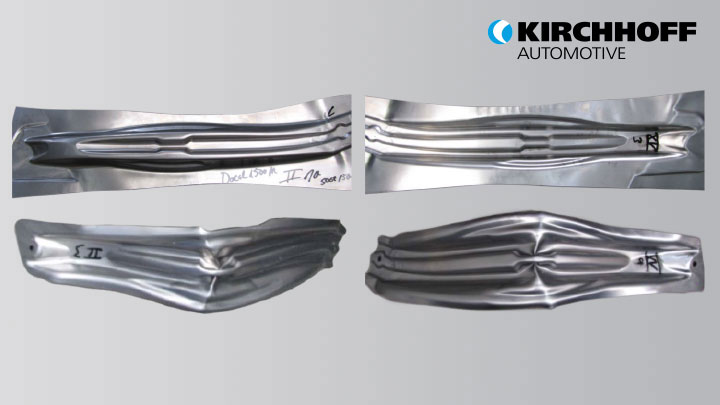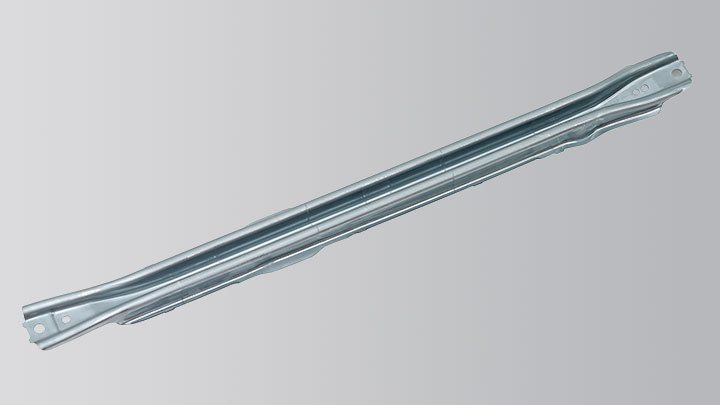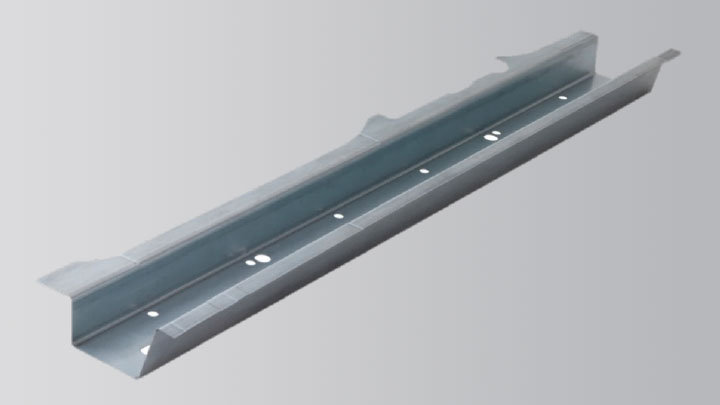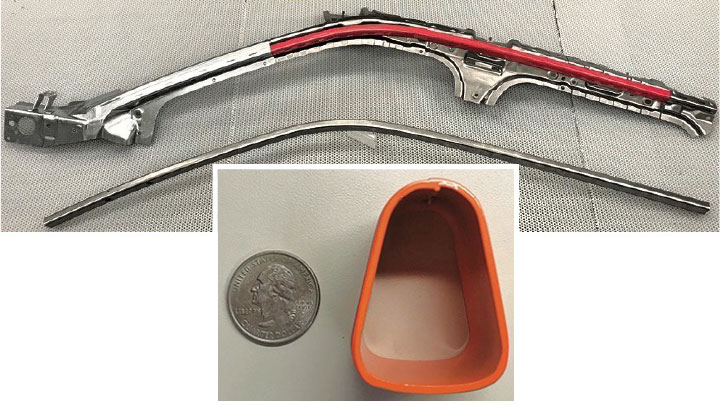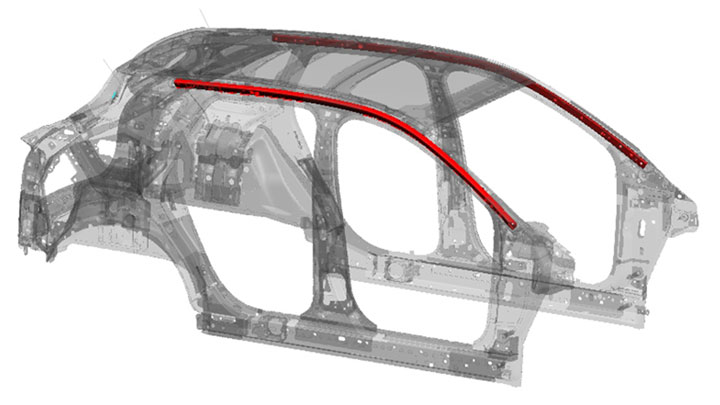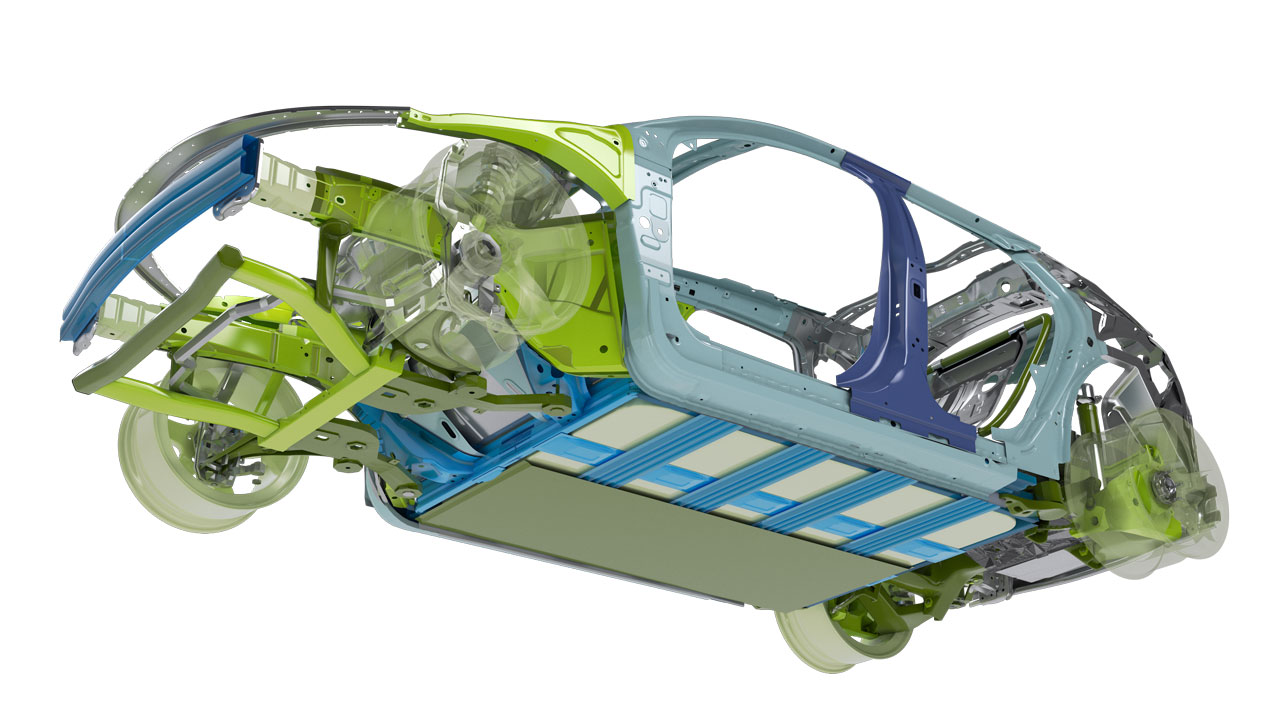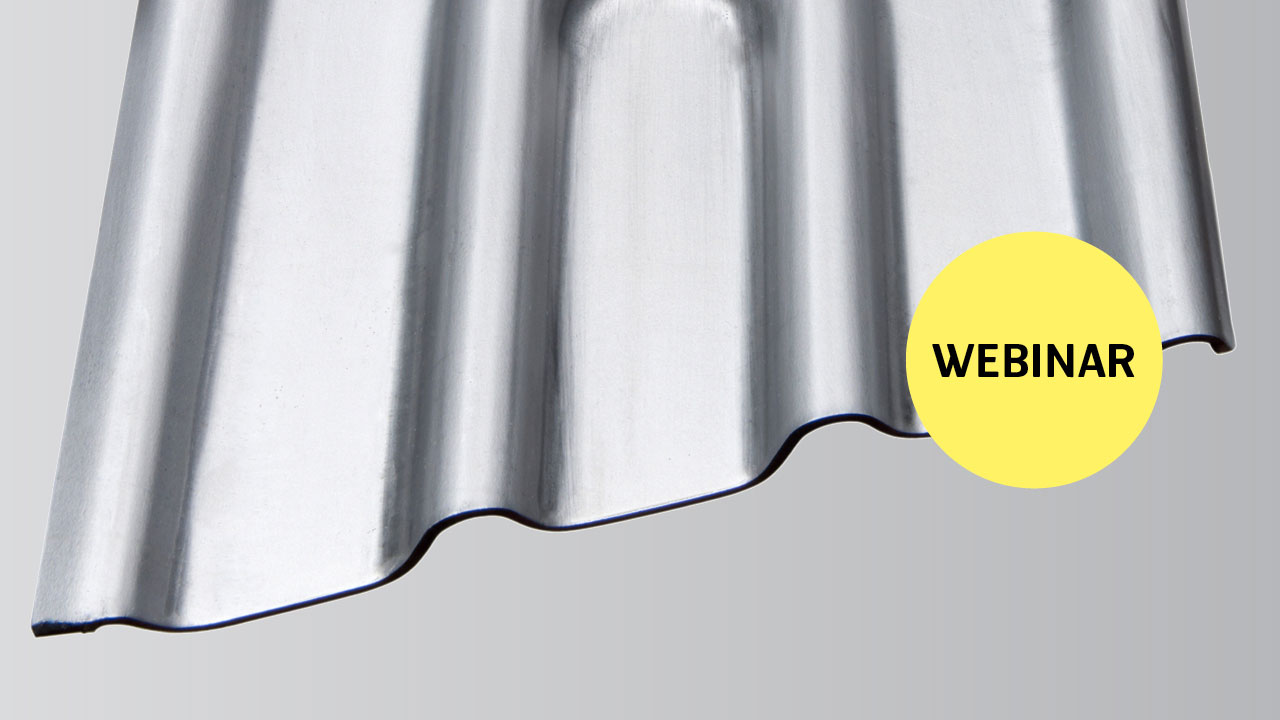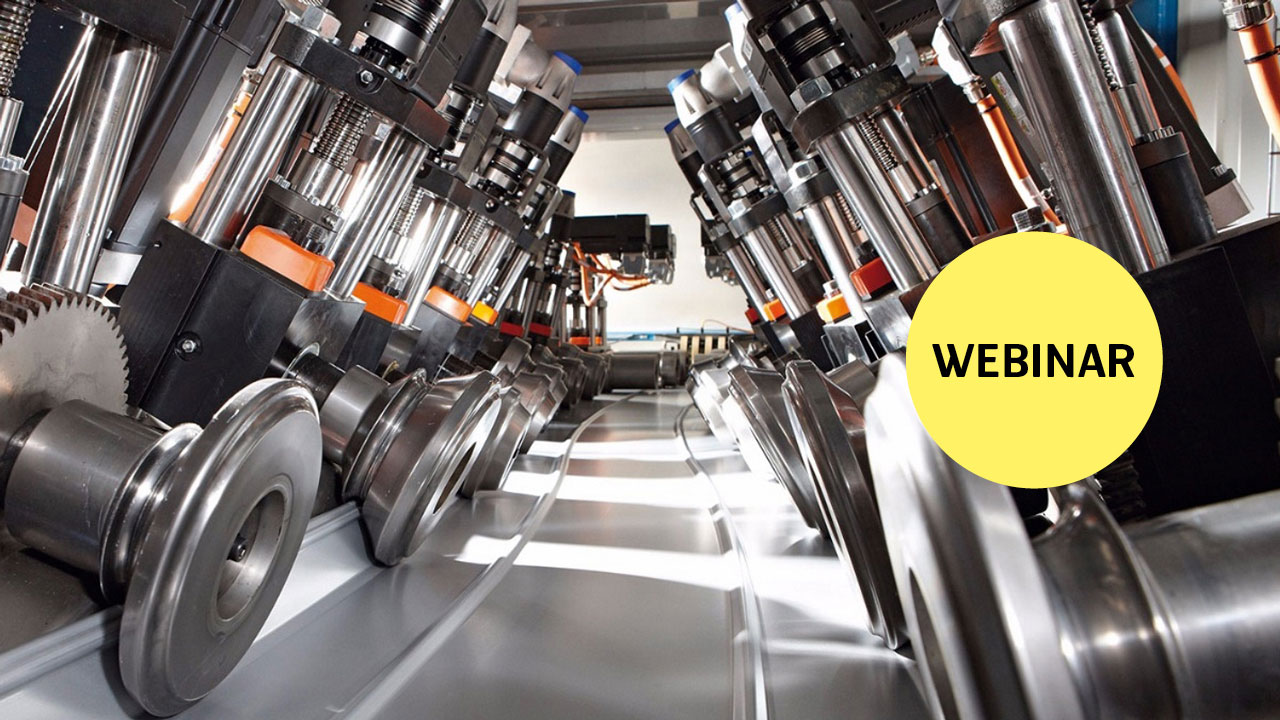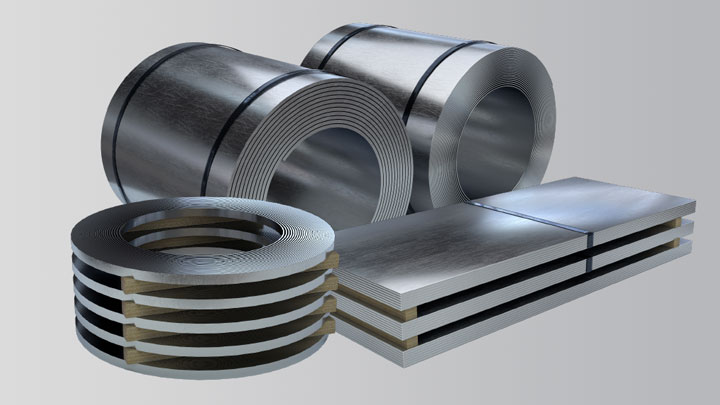Impressive trials in cold-stamping 1.5 GPa and 1.7 GPa steels
KIRCHHOFF Automotive has successfully cold stamped this side impact beam prototype using Docol® 1500M and 1700M grades. The top photos show the formed parts, while the bottom photos show the parts after a 3-point bending test.
For some auto parts, going stronger is straightforward
This side impact beam, cold stamped from Docol® CR1150Y1400-MS-EG steel, was successfully tested in a serial production die designed for CR950Y1200T-MS-EG. SSAB’s forming experts believe the part could be successfully cold stamped using CR1220Y1500T-MS-EG.
Cold forming avoids hydrogen embrittlement pitfalls
After hot stamping, manufacturers must be extremely careful with trimming and piercing operation, or they might cause delayed fractures. Consequently, lasers are typically needed to pierce or trim hot-stamped parts – and these lasers are more complicated and expensive than conventional mechanical tools.
With cold forming, stampers can use conventional mechanical piercing and trimming tools without the risk of delayed fracture, even on 1.5 GPa steels. And in-line mechanical trimming and piercing are familiar, fast, and cost-effective processes for the stampers.
Managing for cold-stamping springback in ultra-high strength steels
Hot-stamping’s two key advantages are its ability to form very complex shapes and the elimination of springback. But Japanese stampers and others have developed a series of strategies to control springback in cold-stamped parts:
- Simulations: forming simulations allow designers to optimize the part’s geometry to control for springback and improve the final accuracy of cold-stamped components.
- Optimization: includes the use of straight bending lines and engineered corner (radius) configurations.
- Beads: the shape and placement of draw beads for greater springback control.
- Die geometry: going from a lower to a higher yield-strength steel, like CR1220Y1500T-MS, can require some changes to the geometry of the die to compensate for higher springback.
- Tools: improved tooling materials, including wear resistance and coatings, to handle the higher die forces.
What other experts are saying about cold stamping UHSS
Martensitic steels provide a cold-formable alternative to hot-formed press hardening steels, as World Auto Steel writes on its martensite webpage.
Using cold stamping allows for the flexibility of considering different strategies when die processing, which may result in reduced springback or incorporating part features not achievable with roll forming. Cold stamping of martensitic steels is not limited to simpler shapes with gentle curvature.
World Auto Steel then shows a photo of a center outer pillar that has been cold-stamped, with a tailor-welded blank of CR1200Y1470T-MS as its upper portion and a CR320Y590T-DP lower portion. They go on to cite:
A study that determined there was a correlation between sheet steel yield strength and the 3-point bending deformation of hat-shaped parts. Based on a comparison of yield strength…CR12001470T-MS has similar performance to hot-stamped PHS-CR1800T-MB and PHS-CR1900T-MB at the same thickness and exceeds the frequently used PHS-CR1500T-MB. For this reason, there may be the potential to reduce costs and even weight with a cold-stamping approach, providing appropriate press, process and die designs are used.
The article goes on to show a cold-stamped cross member reinforcement, in commercial production, made in martensitic 1500 MPa steel:
The varying elevation of this part, combined with a non-uniform cross section at the outermost edges, help control springback, but makes roll forming significantly more challenging if that were the cold-forming approach [instead of its cold-stamped process].
The article concludes with an example of a cold-formed 1500T-MS center roof reinforcement that uses the patented Stress Reverse Forming™ process for improved dimensional accuracy via reduced springback sensitivity.
Comparing 1.5 GPa cold-stamping to 1.5 GPa hot-stamping
Accuracy: With no springback, press-hardened parts can be very precise. With cold-stamping, comprehensive springback management is key to parts accuracy.
Shape of part: Hot stamping is ideal for highly complex part shapes – although cold stamping is making impressive gains parts complexity.
Cycle time: Cold stamping is much, much faster that press hardening.
Energy use: Hot stamping requires rapid heating (to 900°C) and rapid cooling; cold stamping does not, saving money and emissions.
Trimming/Piercing: 1.5 GPa PHS parts require laser trimming and piercing to avoid hydrogen embrittlement. On the other hand, cold-stamped 1500 MPa parts can be mechanically cut and pierced in-line.



